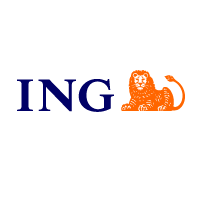Contact A Broker
Contact: Eugene M Edwards (Senior Consultant)
E: eugenemedwards@protonmail.com
Contact: Warren Wimslow (Consultant)






SBLC Monetization: Unlocking the Value of Bank Instruments

The Standby Letter of Credit, or SBLC, is a widely used financial instrument that provides businesses with a means of securing payment for goods or services.
SBLCs are issued by banks and act as a backup payment mechanism, guaranteeing payment in the event that the buyer is unable to fulfill their payment obligations. While SBLCs are primarily used for trade finance purposes, they are also valuable assets that can be monetized to access cash funds. In this article, we will explore the concept of standby letter of credit, SBLC monetization, how it works, and the benefits of standby letter of credit in this process.
What is SBLC Monetization?

SBLC monetization is a process by which the holder of an SBLC can access cash funds by leveraging the value of the instrument. This process involves selling the SBLC to a third party, typically a monetization firm, which then provides monetary payment to the holder with a percentage of the funds paid against the face value of the SBLC in cash.
The monetization firm will then use the SBLC as collateral for a loan or credit line amount of credit, resulting in a profit for both parties involved money creation process.
SBLC Monetization Process

The process of SBLC monetization can be divided into several steps. First, the holder of the SBLC must submit the instrument to a monetization firm for evaluation. This evaluation typically involves verifying the authenticity of the SBLC and determining its value based on market conditions and other factors.
Once the legal tender of cash equivalents the SBLC has been evaluated, the monetization firm will provide the holder with an offer that outlines the amount of cash they can receive in exchange for the SBLC.
If the holder accepts the offer, they will be asked to provide additional documentation, such as proof of ownership and legal entitlement to the SBLC.
After the documentation has been verified by rated banks, the SBLC will be assigned to the monetization firm, who will then use it as collateral for a loan or line of credit.
The cash funds obtained through this process will then be transferred to the holder client’s bank account receiving cash funds less the fees charged by data monetization refers, the bank coordinates the monetization firm.
Benefits of SBLC Monetization

SBLC monetization offers several benefits for businesses and individuals who hold these instruments.
First, it provides access to cash funds that can be used for a variety of purposes, including business expansion, capital investments, and debt repayment.
This is project funding can be particularly beneficial for small and medium-sized enterprises (SMEs) that may not have access to traditional financing options.
Additionally, SBLC monetization can be a valuable tool for risk management. By monetizing an SBLC, the holder can reduce their exposure to credit risk and ensure that they receive payment for goods or services provided. This can be particularly important for businesses that operate in high-risk industries or deal with unfamiliar counterparties.
Finally, SBLC monetization can provide a way to improve liquidity and free up capital that would otherwise be tied up in an instrument that may not be utilized in the immediate future. This can allow businesses to pursue growth opportunities and take advantage of favorable market conditions.
Monetizing Bank Instruments

While SBLCs are the most commonly monetized bank instrument, other types of bank instruments can also be monetized by prime banks. These such monetize instruments may include Bank Guarantees, Medium Term Notes (MTNs), and other types such instruments of financial instruments issued by credible banks.
The monetization process for these types of instruments is similar to that of SBLCs, and involves submitting the instrument to a monetization firm for evaluation and assignment.
However, the value of these instruments may vary depending on the specific terms and conditions of clients bank under which they were issued, so it is important to work with a reputable monetization firm that has experience with a wide range of bank instruments.
Conclusion
SBLC monetization is a valuable tool for businesses and individuals who hold these instruments.
By leveraging the value of an SBLC, holders can unlock financial resources that can be used for a variety of purposes, while also reducing their exposure to credit risk and improving liquidity.
While SBLCs are the most commonly monetized bank instrument, other types of financial instruments issued by credible banks can also be monetized through a similar process. If you are considering monetizing a bank instrument, it is important to work with a reputable firm that has experience with these types of transactions, and to carefully evaluate the terms and conditions of any offer received.
Credible bank instruments ISSUED are becoming more and more popular in the world of finance, as they offer investors a unique opportunity to generate fixed income cash flows.
These instruments refer to financial instruments issued by reputable banks that serve as a form of collateral against various financial transactions.
One of the common uses of credible bank instruments is bank instrument monetization, where the owner of the instrument can use it as collateral to raise finance against it.
The Treasury Department sold several instruments ISSUED in recent years, generating significant funds for financing government spending. Banks issue these instruments in various forms, such as Letter of Credit (LC), Standby Letter of Credit (SBLC), and Bank Guarantee (BG), to name a few.
A LC is a document issued by a bank that guarantees payment to a supplier once the terms of the contract are met.
An SBLC is similar to an LC, but it acts as a backup payment mechanism if the buyer defaults on payment. A BG, on the other hand, is a guarantee issued by the bank to a third party to ensure that the client will fulfill their financial obligations.
instruments are attractive to investors because they can be used as collateral to obtain financing.
This type of financing is known as non-recourse loan, where the borrower is not personally liable for the loan.
Instead, the collateral serves as security for the loan, and the lender can only collect the collateral in case of default.
This makes non-recourse financing a low-risk option for investors, and it’s also applicable to those who have limited credit history or are ineligible for other forms of financing.
Central banks also purchase instruments as part of their monetary policy. This type of instrument enables central banks to regulate the monetary supply by withdrawing or releasing funds, thereby influencing interest rates.
The bank instrument issued by credible banks is the perfect tool for transactions where both cash and a guarantee of payment are required.
These instruments have opened up avenues for individuals and companies to receive cash funds without the need for traditional forms of financing, thereby less bank costs and providing more flexibility and convenience.
The use of instruments is not limited to financing debt purchases, as they also play a vital role in international trade.
For instance, when an importer requires a guarantee of shipment, the exporter can offer a security, cash payment interest an SBLC or a bank guarantee to reassure the importer that the goods will be delivered. This helps to mitigate the risk associated with international trade and strengthens the bond between trade partners.
In conclusion, instruments are a versatile financial instrument that offers multiple benefits to investors, banks, and governments.
These instruments provide a practical solution for those who require financing or guarantees for private debt, or floating or hard assets and they also serve as a tool for government finances and regulating monetary supply. With the rising demand for non-traditional financing options, instruments are set to play an increasingly essential role in the finance industry.
Bank instruments are a popular avenue for individuals and businesses to obtain financing or secure transactions for goods and services.
A credible bank instrument is one that has been issued by a reputable banking institution and is guaranteed to have a certain value or yield.
These instruments can take many forms, including certificates of deposit, bonds, and letters of credit.
One common use for instruments is to provide cash flows for investors. These instruments are often preferred over volatile investments like stocks because they provide a consistent source of income.
The the government treasury and department frequently issues bonds to finance government spending, the government issues debt which are then receiving cash funds and purchasing debt directly then sold to investors looking for a dependable stream of income.
Another use for instruments is in bank instrument monetization. This process involves using a bank instrument as collateral for a non-recourse loan. The borrower receives cash funds, while the instrument owner’s bank or lender holds the instrument as security.
Bank instrument monetization is a preferred financing technique for businesses looking to receive credit line, as it enables them to secure the lines of a credit line with a credible bank and instrument owner’s capital well.
A letter of credit, also known as an SBLC, is another type of credible bank instrument that is commonly used in international trade.
This instrument allows the buyer and seller to secure a transaction by using the letter of credit sblc the bank as an intermediary.
When the buyer submits a letter of credit to the bank payment undertaking seller, the bank guarantees payment upon delivery of the goods, providing assurance to both parties that the transaction will be completed as agreed.
Central bank purchases of instruments can have a significant impact on the global economy. When a central bank buys up large amounts of bonds, for example, it puts downward pressure on interest rates, which can stimulate economic growth.
Non-recourse loans can also be backed by instruments that purchase government bonds, providing businesses with the flexibility they need to secure funding without sacrificing valuable assets.
In conclusion, instruments play a vital role in many different aspects of finance and trade. They offer investors a reliable source of income security interest, while providing businesses rated banks with secure collateral to secure credit lines or acquire funding.
The use of instruments is a critical tool for economic value, maintaining a stable economy and facilitating international trade.







